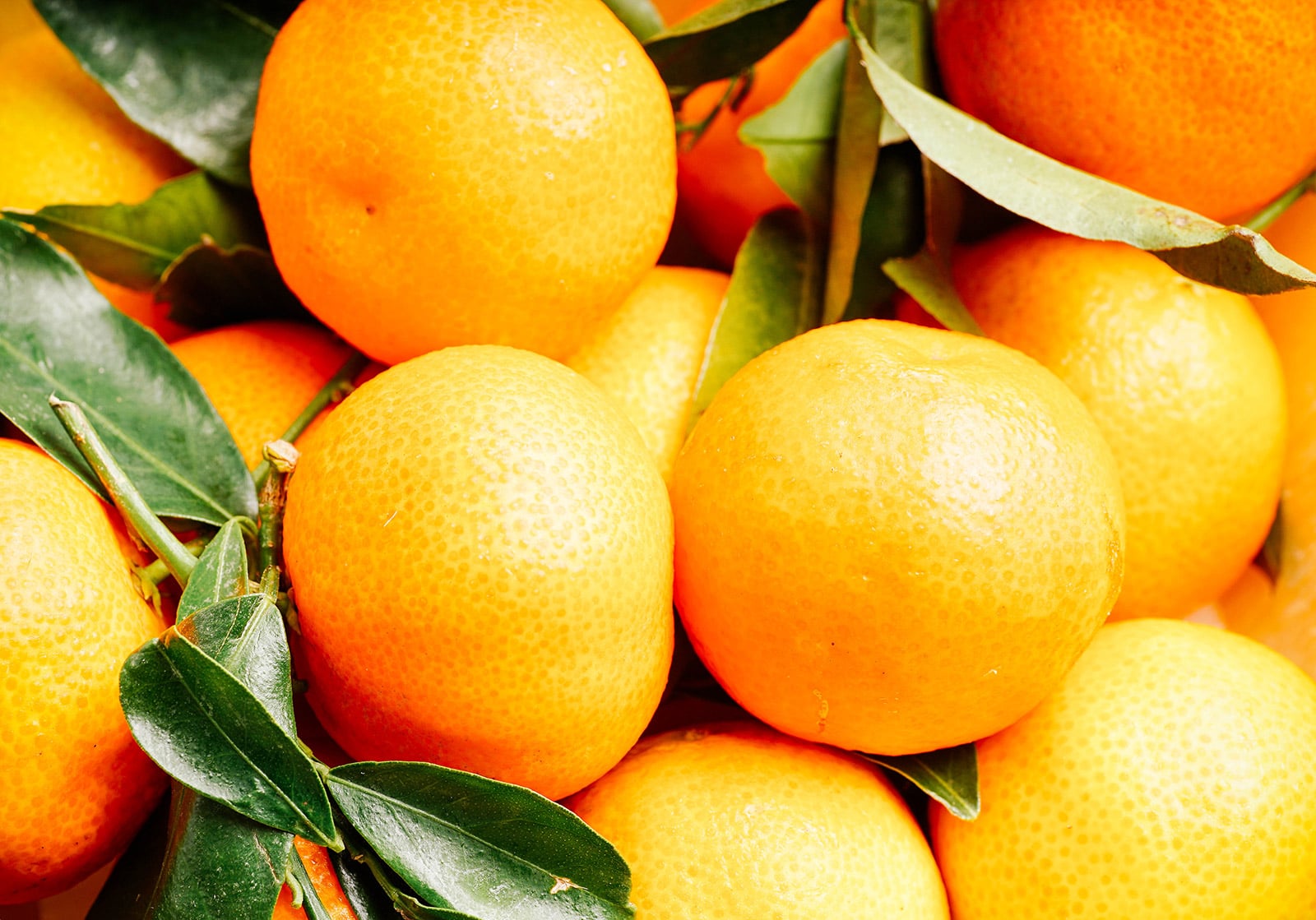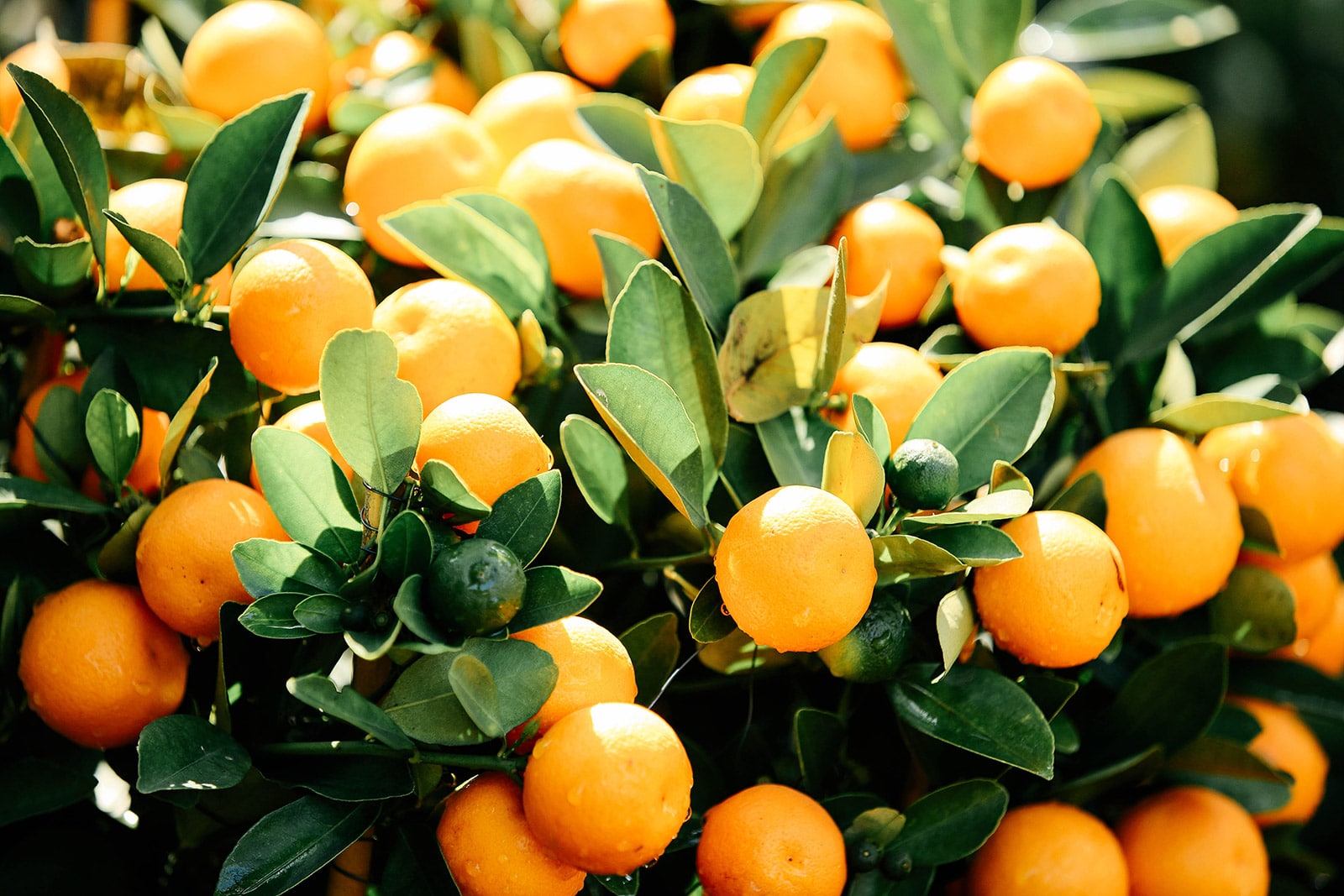Mandarins and clementines are two fruits that look very similar to oranges, but are smaller in size.
There are lots of small, round, and orange citrus fruits available, and it can be tough to tell the difference between them if you don’t know what you’re looking for.
What’s a mandarin? What’s a clementine? And are either of these the same thing as those bags of Cuties or Halos you see in the grocery store? (Yes, actually—those adorable little oranges sold under the Cuties and Halos brand names are clementines.)
But while mandarins and clementines have many similarities, you might be surprised by what makes them different. Read on!

Types of orange citrus fruits
The way we typically use the term “orange” refers to the large, round, sweet fruit we know and love, but botanically speaking, an orange is the fruit of various citrus species in the family Rutaceae. There are many different types of orange citrus fruits, so let’s take a look at the main ones below.
- Orange: Also known as a common orange or sweet orange (these are the navel, Valencia, and blood oranges you see in stores), this fruit has a thick rind, bitter pith, and sweet-tart flesh. It’s believed to be a hybrid of a pomelo and a mandarin orange.
- Mandarin: This is an original species of orange from where the common orange descended. (Yes, it’s the grandmother!) Mandarins are typically smaller and sweeter than oranges, with a slightly flattened shape. They also have thinner and looser skins that make them easier to peel.
- Tangerine: Tangerines refer to a group of several distinct mandarin-pomelo hybrids. Sometimes, you’ll find tangerine-grapefruit hybrids labeled and sold as tangerines as well. They have slightly tougher skins, and their flavor is a little less sweet.
- Tangelo: This distinctive fruit is on the larger side of all the small oranges, and is believed to be a hybrid of a Citrus reticulata variety (such as tangerine or mandarin) and a Citrus maxima variety (such as pomelo or grapefruit). So, you can see where its name comes from. It’s generally more tangy than a mandarin, and has a characteristic “nipple” at the stem.
- Clementine: This is the smallest type of mandarin orange and a couple of them can fit in the palm of your hand. It is super sweet and seedless and has a very thin rind and pith. The loose, leathery skin makes it much easier to peel than most other mandarin hybrids.
- Satsuma: This mandarin-pomelo hybrid has a higher proportion of pomelo in its genome than other types of mandarins. It’s a semi-seedless variety that originated in the Satsuma province of Japan and is considered to be one of the sweetest citrus fruits. It’s also the most tender and easily damaged type of mandarin.

Mandarins vs. clementines
Did you notice anything interesting about the list above?
Mandarins are the ancestor of the group, while clementines, tangerines, satsumas, and even your everyday oranges are all part of the mandarin family.
So all clementines are mandarins, but not all mandarins are clementines.

Mandarins are thought to have originated in China, and wild mandarins can still be found today in the Nanling Mountains of Southern China.
The botanical name for the mandarin is Citrus reticulata. In Latin, reticulata means “netted” and the name stems from the net-like interlaced pattern made by the pith (the spongy white portion between the flesh and the rind).
The clementine (Citrus × clementina) is a smaller and seedless variety of mandarin that was cultivated by Clément Rodier, a French missionary in Algeria (for whom the fruit was named). It’s actually a hybrid of a Mediterranean willowleaf mandarin orange (C. × deliciosa) and a sweet orange (C. × sinensis).
Now, if you remember that a sweet orange is actually a mandarin-pomelo hybrid, that means the clementine is a hybrid of a hybrid! (A tad confusing, I know.)

Appearance
Mandarins and clementines both have smooth, glossy skins with a deep orange color. They have a round, slightly flattened shape and are smaller than oranges, though clementines tend to be a little smaller of the two.
Both fruits have thin, loose skins that are easy to peel in one piece, making them very popular with kids and as on-the-go snacks. They also tend to separate into segments more easily than an orange.

Texture and taste
Mandarins come in both seeded and seedless varieties, but clementines are always seedless (or practically seedless).
Both of these citrus fruits are sweet and juicy, with less acid than oranges. Clementines are usually a bit sweeter than other types of mandarins.
Nutrition
Small but powerful, mandarins and clementines have very similar nutritional profiles that pack an impressive health punch.
Both fruits are rich in vitamin C, though clementines contain slightly higher amounts. A single clementine provides up to 60 percent of the daily recommended intake of vitamin C, while a mandarin provides about a third.
The fruits are also good sources of folate, potassium, fiber, and antioxidants, and are known to strengthen the immune system and promote gut health. Even their flowers have benefits: orange blossoms can be steeped in hot water to make a healing orange blossom tea that aids in digestion, sleep, and anxiety.
While it’s hard to quantify whether mandarins—or clementines—have more vitamins and minerals than the other, it’s safe to say both of these fruits are beneficial to your diet.
















I find a very big taste difference between clementines vs mandarins. The clementines are by far a superior fruit, but I am having trouble finding them in Notthwest Indiana.
I believe there is an error here. The true Tangerinewas native to North Africa Tangerine/from Tangiers. The species as far as I know died out from an illness in the late 40s early 50s.
Tangerine was*
Nothing in this article runs counter to your comments